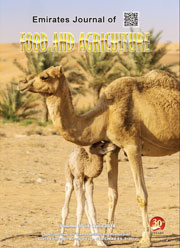IN VITRO PSEUDOBULB BASED MICROPROPAGATION FOR MASS DEVELOPMENT OF CYMBIDIUM FINLAYSONIANUM LINDL.
DOI:
https://doi.org/10.9755/ejfa.2015.04.017Keywords:
Axenic pseudobulb, Cymbidium finlaysonianum, Micropropagation, Multiple shoot, Plant growth regulatorsAbstract
An efficient protocol for micropropagation using the axenic pseudobulb derived from in vitro germinated seedlings of Cymbidium finlaysonianum Lindl was developed. The immature seeds were germinated on MS0 basal medium for seedling development. In vitro grown seedlings responded well and stimulated pseudobulb formation with benzylamino purine (BAP) 1.0 mg/L + α-naphthalene acetic acid (NAA) 0.5 mg/L on MS medium. For multiple shoot induction, the axenic pseudobulb segments excised from 8 month old seedlings were cultured on the medium containing different concentrations and combinations of growth regulators (NAA, BAP and Kinetin). Best response for shoot multiplication and elongation was obtained in medium with 0.75 mg/L NAA and 1.5 mg/L BAP. The individual shoots were transferred to half-strength MS medium supplemented with 0.5 to 2.0 mg/L of indole-3 acetic acid (IAA), indole-3 butyric acid (IBA) and naphthalene acetic acid (NAA) to observe root development. Half strength of MS + 1.00 mg/ L IAA has proven the best for root induction. The well rooted plants were hardened successfully in the potting mixture containing coconut husk, charcoal pieces (5-7 mm size), decaying litter and very small brick pieces (5-7 mm size) in the ratio of 1:1:1:1 and eventually plants are established under natural condition. The present investigation can be used for rapid mass propagation of this highly important Cymbidium finlaysonianum orchid species.










 .
. 